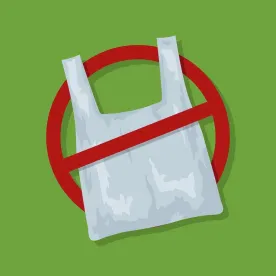The U.S. Environmental Protection Agency (EPA) took an important step toward regulating PFAS (per- and poly-fluoroalkyl substances) on September 6, 2022 when it published a Notice of Federal Rulemaking to begin the process of listing two PFAS as hazardous substances under Section 102(a) of the Comprehensive Environmental Response, Compensation, and Liability Act (CERCLA, also known as the “Superfund” law). Specifically, perfluorooctanesulfonate (PFOS) and perfluorooctanoic acid (PFOA), both of which have been identified as health hazards since 2016, are being reviewed. Comments on the proposal are due by October 6, 2022.
Listing these two PFAS as hazardous substances has the potential to affect a wide variety of businesses across industries. Here’s what to expect:
-
Ongoing remediation may be expanded and closed sites may be reopened. The Superfund program was created in 1980, and more than 1,300 sites have been listed for priority cleanup. Approximately a quarter of these sites have been fully remediated and officially closed. But Superfund does not have time limits, and all sites are subject to “reopener” clauses. The discovery of listed PFAS will enable EPA to reopen previously closed cleanup sites with new testing and remediation requirements.
-
New cleanup sites may be identified and listed. A number of states have adopted testing requirements for PFAS in water and soil, with a focus on sites posing special risks. For example, California has been requiring testing at airports, wastewater treatment plants, and certain manufacturing facilities since 2019. With two major PFAS soon to be subject to federal remediation requirements, testing could lead to the identification and prioritization of new PFAS “hotspots” that could meet the criteria for listing as Superfund sites.
-
New state action and litigation could follow. Public awareness of PFAS contamination is likely to increase as expanded federal testing and remediation requirements kick in. States may expand their own testing requirements and require remediation at sites that do not qualify for federal priority cleanup under CERCLA. Several states have “no more stringent” laws that limit state regulation of PFAS, so federal listings could open the door to action for the first time in some places. Federal listing will also bolster claims by plaintiffs, and increase the likelihood that courts will grant claims for medical monitoring and other relief.
-
Diligence requirements will expand. Proposed industry standards for “all appropriate inquiry” (AAI) by prospective purchasers of property already recognize that PFAS is a concern. Once listed, assessment of PFAS will become mandatory for fulfilling AAI requirements. As PFAS contamination is believed to be very common throughout the United States, the possible identification of PFAS as a Recognized Environmental Condition in Phase I Environmental Site Assessment reports may impact many transactions.
-
Improved technology for cleanup and support for redevelopment may be available. While PFAS are remarkably persistent in the environment, scientists have been working on methods for cleaning them up for decades. Though no silver bullet has yet been identified, there are promising technologies in development that may make remediation or mitigation more feasible and less costly. In addition, a range of tax incentives are available at the local, state and federal levels to incentivize investment and revitalization of areas impacted by contamination. The 2021 Bipartisan Infrastructure Law included $1.5 billion in federal funding to support remediation and redevelopment of brownfield properties in the form of grants and loan guarantees. Listing PFAS as a hazardous substance will make these and other incentives available for property owners and investors interested in rehabilitating properties where PFAS are identified.




 />i
/>i

